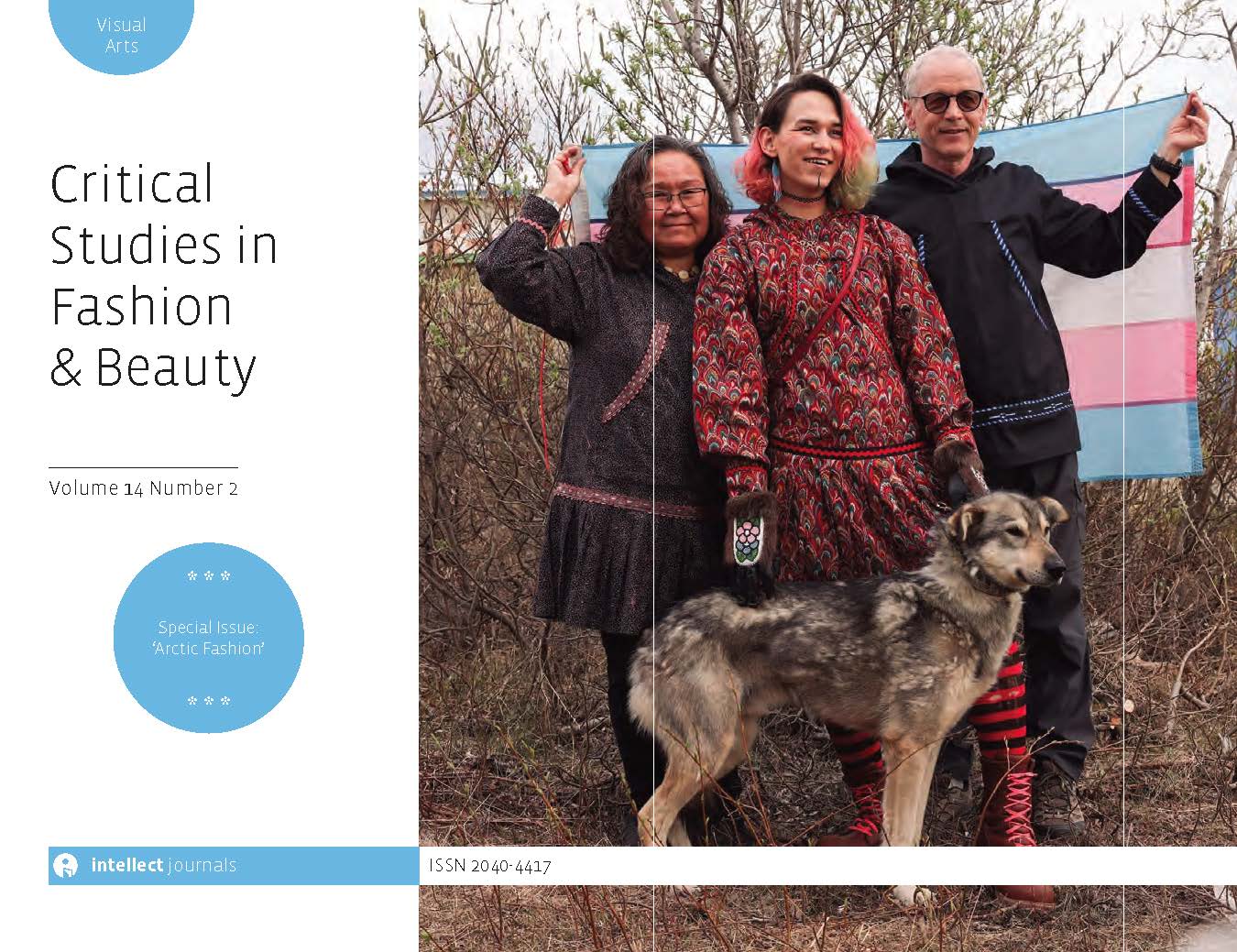- Home
- A-Z Publications
- Critical Studies in Fashion & Beauty
- Previous Issues
- Volume 11, Issue 2, 2020
Critical Studies in Fashion & Beauty - Volume 11, Issue 2, 2020
Volume 11, Issue 2, 2020
-
-
The dialectical nature of Cindy Sherman’s fashion photographs
More LessThis article seeks to interrogate the increasingly prevalent consideration of fashion photographs as ‘artworks’, independent of their commercial function. Using Cindy Sherman’s fashion photographs as a case study, I argue that they cannot be read either as a straightforward subversion of the fashion industry or, conversely, as totally subservient to it. While most of the writings about these works have focused on the ways in which they interrogate media constructions of feminine beauty ideals, the reasons for their embrace by the fashion industry have been largely neglected. I seek to address this lacuna by arguing that the challenging nature of Sherman’s fashion photographs, far from being antithetical to their commercial function, is precisely their source of appeal to the fashion industry. Her images are sought after by the fashion world, not because they adhere to the promotional tropes conventionally seen in fashion advertising but because they seek to distance themselves from them. This paradox can be explained by the fact that the economic success of elite industries such as haute couture rests increasingly on their ability to promote themselves as being ‘above’ commerce. It is this double-edged nature of her fashion photographs that enables them to operate simultaneously as critical interrogations of feminine ideals of beauty in an art world context, and as promotional tools within the fashion industry.
-
-
-
Critical reflections on cultural appropriation, race and the role of fancy dress costume
More LessCultural appropriation in fashionable dress has become an increasingly urgent subject within scholarly and generalist discussions. Few weeks now pass without a news story criticizing a fashion brand for producing and promoting culturally insensitive clothing. A form of clothing most frequently and controversially associated with cultural trespass, but generally marginalized within academic enquiries, is fancy dress costume. This article seeks, first, to promote a critical and continuous academic engagement with fancy dress costume and contribute to a growing body of scholarship that recognizes its cultural and social importance. Second, I complicate discussions about the causes of cultural appropriation within fancy dress costume by reflecting on the circumstances and motives in which people perform, dressed very differently to their conventional appearance. Addressing these points, the article makes a unique contribution to clothing studies and discussions about cultural appropriation by advocating a more nuanced understanding of people’s self-awareness when they participate in fancy dress costume, and suggests how this might be achieved.
-
-
-
Dina Torkia’s Modestly: Beauty work, autobiographical habitus and the modest fashion influencer
More LessBy Lee BarronThe article examines the Islamic fashion vlogger Dina Torkia’s book Modestly in terms of the ways in which it combines beauty and fashion advice and tutorials relating to modest fashion, hijab styling and cosmetics application. Through a critical discourse analysis of the book’s narrative and its many beauty- and fashion-based images, the article stresses how, having gained renown as a social media-based influencer and vlogger, Torkia’s book represents a remediated approach to communication practices of beauty and style advice. Hence, in a printed book form, Modestly consistently combines instruction with autobiographical content. In this regard, the article explores the differing ways that Modestly articulates expressions of Bourdieu’s concept of habitus in the context of modest Islamic fashion. This is explored in terms of the nature of the beauty and fashion instruction that is the main focus of the book, but also in how the autobiographical aspects of the text articulate Torkia’s self-reflections on cultural and sartorial habitus in relation to a Muslim lifestyle, modest dress and beauty conventions and changing perceptions and articulations of cultural hybridity and intersectional identity.
-
-
-
Scenarios of style: An exploration of subcultural research as embodied practice in Los Angeles’s vintage Jamaican music scene
More LessBy Nina L. ColeThis article sets forth a performance studies framework for subcultural research: scenarios of style. This embodied epistemology brings together Diana Taylor’s scenario paradigm with interdisciplinary perspectives on style to provide a means for researchers to explore the ways in which style is constitutive of subcultural life. Twenty-five years of involvement in Los Angeles’s vintage Jamaican music scene and four years of fieldwork – comprised of participant observation, oral history interviews and archival research – undergird my theorization. To communicate individual agency and subcultural traditions of style, this article explores a single case study situated within my larger research setting. Because scenarios of style supports embodied, situated understandings of knowledge and is contextually adaptable, this article posits its broader relevancy for fashion studies research.
-
Most Read This Month


